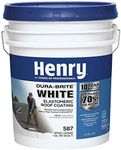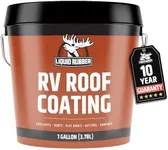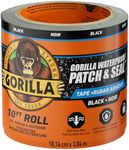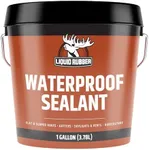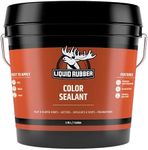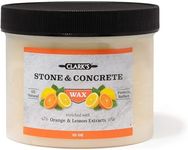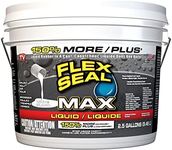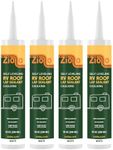Buying Guide for the Best Roof Leak Sealer
Choosing the right roof leak sealer is important to ensure your roof stays watertight and protected from the elements. The best sealer for you will depend on the type of roof you have, the size and location of the leak, and how easy you want the application process to be. Understanding the key features of roof leak sealers will help you make a confident choice that matches your needs and ensures long-lasting results.Type of SealerThe type of sealer refers to the main material or formula used, such as liquid rubber, silicone, acrylic, or bitumen. This is important because different types work better on certain roof materials and in specific weather conditions. Liquid rubber and silicone are flexible and waterproof, making them good for most roof types, while bitumen is often used for asphalt roofs. When choosing, consider your roof material and the climate in your area. For example, if you need flexibility for temperature changes, silicone or liquid rubber is a good choice, while bitumen is better for traditional shingle roofs.
Application MethodApplication method describes how the sealer is put onto the roof, such as by brush, roller, spray, or caulking gun. This matters because some methods are easier for small repairs, while others are better for covering larger areas. Brush and caulk are great for small cracks or holes, while rollers and sprays are better for sealing bigger sections. If you have a small, targeted leak, a brush or caulk tube is usually enough. For larger or multiple leaks, a roller or spray can save time and effort.
Drying and Curing TimeDrying and curing time is how long the sealer takes to set and become waterproof. This is important because you want the repair to be effective as soon as possible, especially if rain is expected. Some sealers dry in just a few hours, while others may take a day or more. If you need a quick fix, look for a fast-drying formula. If you have more time and want a stronger bond, a longer curing time can be acceptable.
Weather ResistanceWeather resistance refers to how well the sealer stands up to sun, rain, snow, and temperature changes. This is crucial for long-term protection. Some sealers are UV-resistant and won’t crack or peel in the sun, while others are better at handling heavy rain or freezing temperatures. Think about the typical weather in your area—if you get a lot of sun, UV resistance is key; if you have harsh winters, look for a sealer that stays flexible in the cold.
Compatibility with Roof MaterialCompatibility means whether the sealer works well with your specific roof type, such as metal, asphalt shingles, tile, or rubber. Using the wrong sealer can lead to poor adhesion or even damage. Always check that the sealer is recommended for your roof material. If you’re unsure, look for a universal sealer that lists multiple roof types, or consult the product’s instructions for guidance.
Longevity and DurabilityLongevity and durability describe how long the sealer will last before needing to be reapplied. This is important for minimizing maintenance and ensuring your roof stays protected. Some sealers are designed to last several years, while others may need more frequent touch-ups. If you want a long-term solution, look for products that advertise extended durability and check user reviews for real-world performance.
